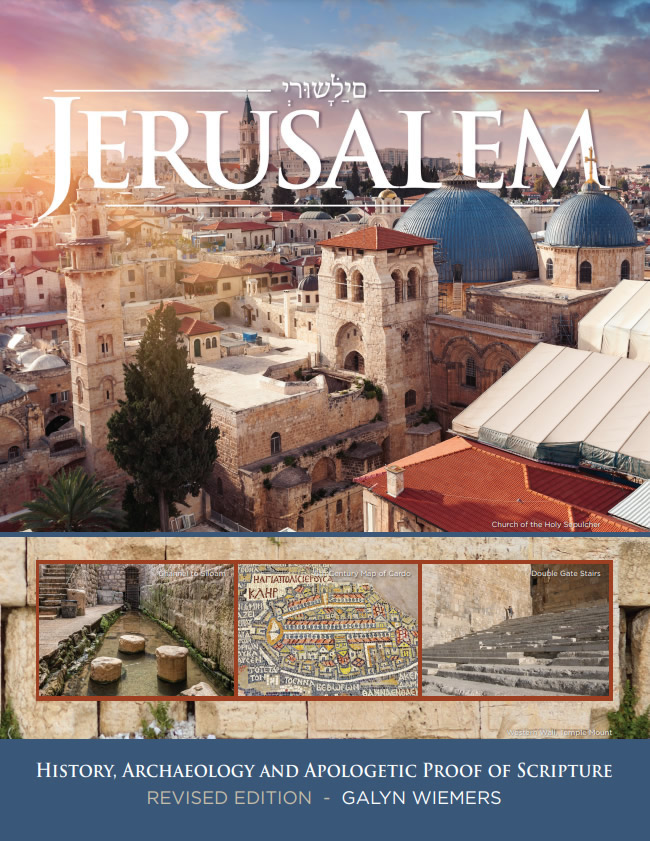61- Roman Inscription |
||||||
| The Jews revolted against Rome in 132. They may have regained control of Jerusalem at that time, and while they held it, began to rebuild their temple on the Temple Mount. Two ancient documents speak of Hadrian destroying the Jewish temple in Jerusalem. One source is rabbinic material. The second comes from a remaining portion of “Chronicon Paschale”, a Christian chronicle written around 630 AD, which is an important source of information about the Byzantine Empire of that time and earlier Jewish history. When Emperor Julian gave the Jews permission to rebuild the temple during his reign in 361 AD, he spoke of three previous destructions of the Jewish Temple: by Babylon in 586 BC, by Rome under Titus in 70 AD and by Hadrian in 135 AD following the Second Jewish revolt. One of the first things Bar Kochba did in 132 was to mint and issue a coin for the newly-restored kingdom of Israel. The coin’s image included the front of the new Temple in Jerusalem on one side, and on the other side two silver trumpets used to call Israel to war from the Temple. Hadrian followed the suppression of this revolt by building of a temple to Jupiter on the Temple Mount and positioning a statue of himself there also. |
||||||
 This photo shows the southern double gate. This wall contains a stone fragment from the base of a Roman statue from the Temple Mount dedicated to Antoninus Pius. The Bordeaux Pilgrim saw this inscription and the statue that went with it setting on the Temple Mount when he visited Jerusalem 333 AD. The Bordeaux Pilgrim records that there were two statues of Hadrian on the Temple Mount, but actually, one wouldm have been of Hadrian and the other of his adopted son, Antoninus Pius, who became emperor after him. They both had beards and even as you look at the inscription today you can see why the Bordeaux Pilgrim thought it was a second statue of Hadrian. |
||||||
The Roman Temple of Jupiter was torn down by Constantine. The stones were later used by the Muslims to build the Dome of the Rock and the Al-Aqsa Mosque. The stone with the inscription was apparently found and placed upside down to replace a broken block above the gate. Hershel Shanks (archaeologist and editor of Biblical Archaeology Review) says: Hadrian erected an equestrian statue of himself on the Temple Mount. The anonymous fourthcentury pilgrim known only as the Bordeaux Pilgrim reports that he saw two statues of Hadrian on the Temple Mount when he visited the site. The Bordeaux Pilgrim probably mistakenly identified the second statue; Hadrian's successor, Antonius Pius (138-161 AD), probably added an equestrian statue of himself, which the Bordeaux Pilgrim saw. . . It is quite possible that the Bordeaux Pilgrim saw this inscription when it was part of a statue on the Temple Mount. But he misread it. Antonius had been adopted by Hadrian and named as his successor in 138 A.D. Thus, Antoninus's name included the name of Hadrian. The Bordeaux Pilgrim apparently looked only at the first two lines and concluded that it was a second statue of Hadrian. Both had a thick beard and looked much alike when they were older. Some modern scholars have made the same mistake and read the same inscription now in secondary use as referring to Hadrian instead of Antoninus. They apparently focused on the name Hadrianus, ignoring the following name, Antoninus. - Hershel Shanks, Jerusalem’s Temple Mount: From Solomon to the Goldern Dome, p. 48 |
||||||
Translation of Latin:
|
||||||
|
 |
UPDATED! 2022 - Open this link |
JERUSALEM: HISTORY, ARCHAEOLOGY AND Download a FREE online .pdf of "Jerusalem" HERE (click on the book cover to download the book as a .pdf ) |
|
|
|
|
|